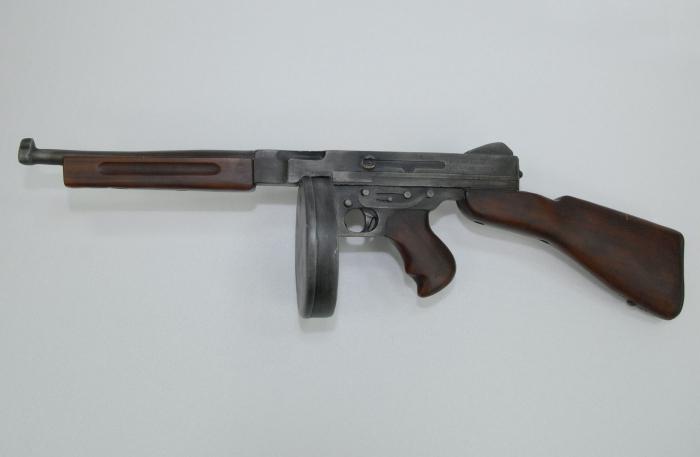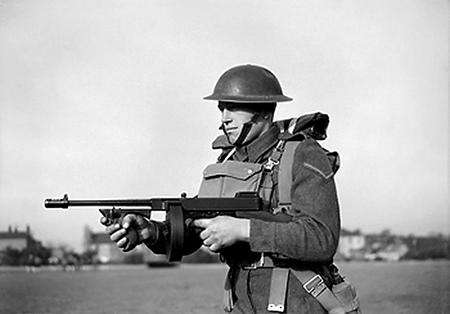The most expensive, most complex, with the largest caliber and the most advertised in its class - all this is Thompson's submachine gun. He is probably the perfect personification of the American weapons school, when price, complexity in production and handling are not only not important, but even welcome, because they will pay more for such weapons.
As already mentioned, this is a very publicized weapon, because you can find few people who would not hear about it, although the number of released samples was relatively small - less than one and a half million pieces (PCA, for comparison, more than six million were released during the war alone). But, America is America, and the ability to “shove” goods to the Americans cannot be denied.
In Russia, submachine guns, like any other automatic weapon, are usually called machine guns, so here Thompson's PP, for the convenience of the reader, will also be called the same. By the way, the concept of "submachine gun" does not exist in the United States, the literal translation of "submachine-gun" sounds like a "submachine gun".
For the thousandth time, there is no need to voice the tactical and technical characteristics that Thompson has. The purpose of this article is to inform the interested reader of little-known facts related to the creation and use of these weapons. And the first thing you probably should start with is the name - Thompson submachine gun (Tommy-gun).
Many sources say that General John Toliver Thompson has nothing to do with the creation of this weapon, but this is not entirely true. Yes, he was not a designer of weapons, but his active work in organizing his creation, and then in selling and introducing him into the troops, probably did no less, if not more, than the activities of the designers Theodore Eichhoff, Oscar Payne and George Gaul. Thanks to his efforts, the whole world recognized: this is the Thompson submachine gun. It should be noted that the military did not seek to adopt this weapon, and General Thompson had to put a lot of work in order for the army to make large orders. However, the general himself did not see this anymore, since he died in 1940, and orders for the Thompson machine gun began only with the outbreak of World War II.

Another mystery of the Thompson machine gun is connected with its caliber of 11.43 mm. Indeed, the choice of such a large cartridge for a submachine gun looks rather strange, especially since all the rest, modern to him, used a smaller cartridge, which, in general, is due to a number of advantages. The reason for choosing 45 caliber was the experience of the Philippine War (1899-1902). From the field army, Washington received repeated reports that 9 mm bullets of regular US Army revolvers did not stop the drug-infiltrated Philippine partisans. Therefore, in the technical specifications for the new weapons contained a requirement for increased "stopping action" of the bullet. And although even the 45 gauge did not meet the “fantastic” requirements of the military, it was much more effective than other models in this parameter.

And, finally, probably, it is necessary to dispel the myth, already born in the Soviet Army, that the Thompson assault rifle in its army (greatly simplified) version was not capable of breaking even a padded jacket or shank of a shovel from a short distance. It's not like that at all. But there is still some truth in this tale. The fact is that, in an effort to simplify the design of the very complex and expensive submachine gun, the Americans removed the barrel locking device from it and turned the Thompson submachine gun into a regular submachine gun with a free shutter. This reduced the already relatively small initial velocity of the bullet. If compared with the cartridge used in the PCA, then this difference will look huge in general (500 m / s versus 300 m / s).
In general, the Thompson submachine gun was an effective and reliable weapon in the hands of an experienced shooter. Another thing is that it was not suitable for the army and large-scale production.